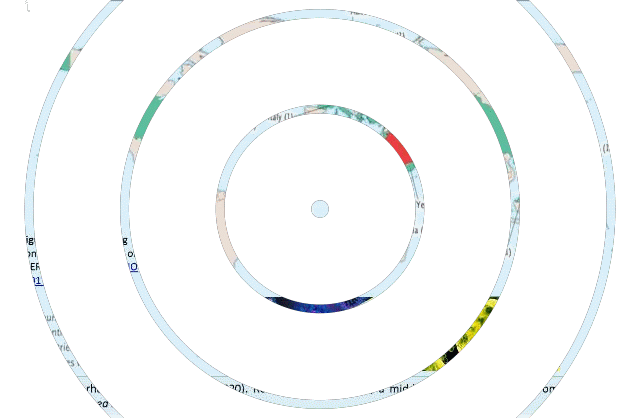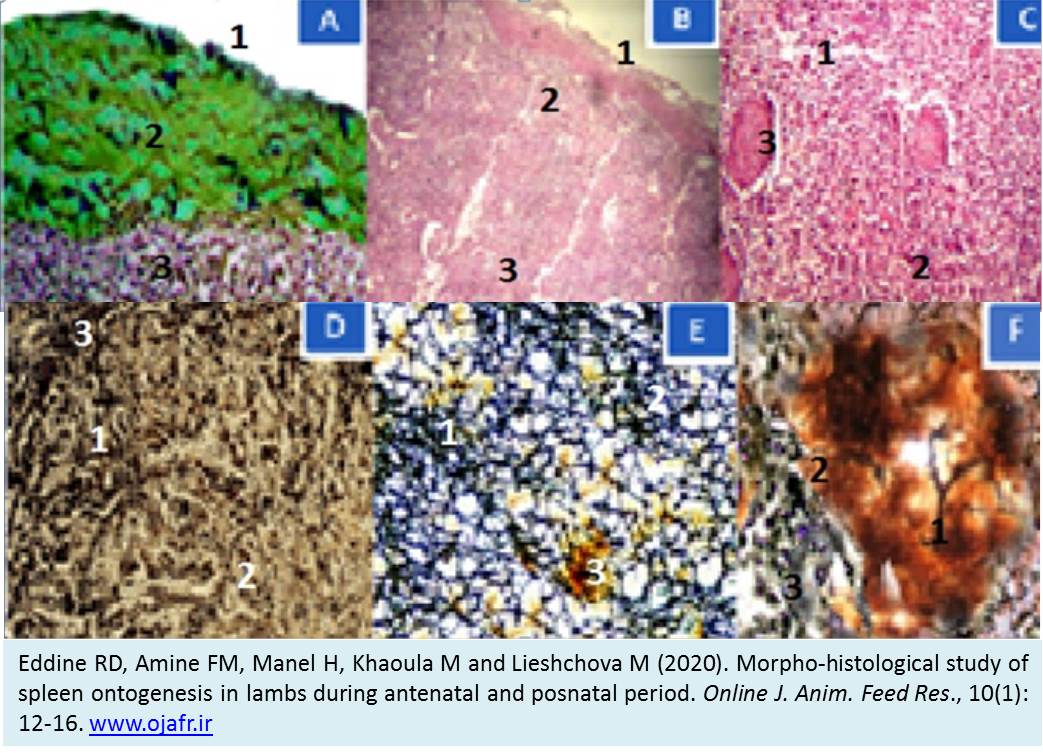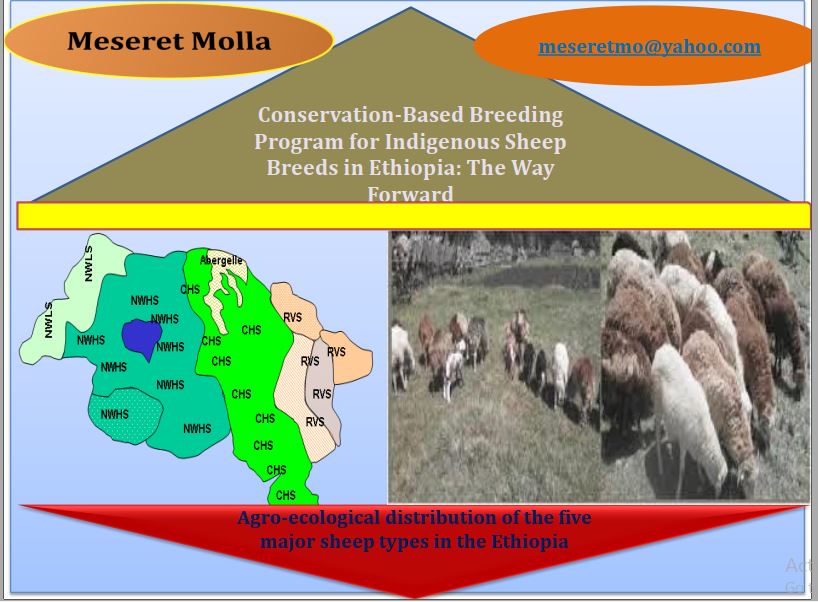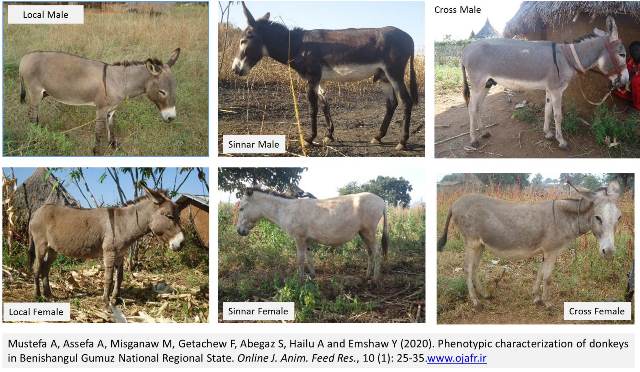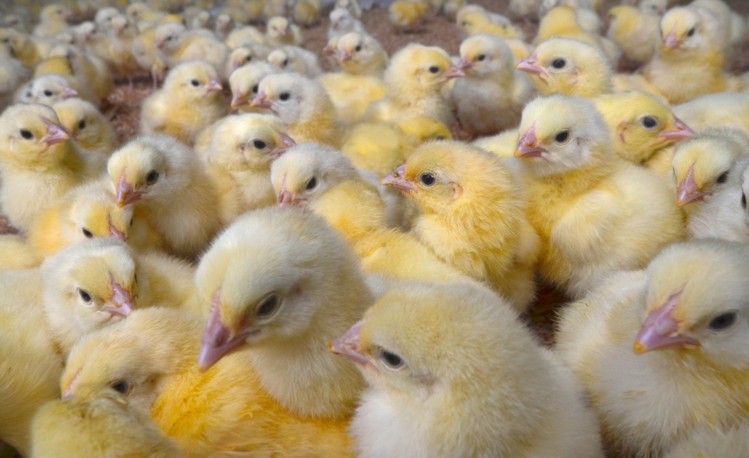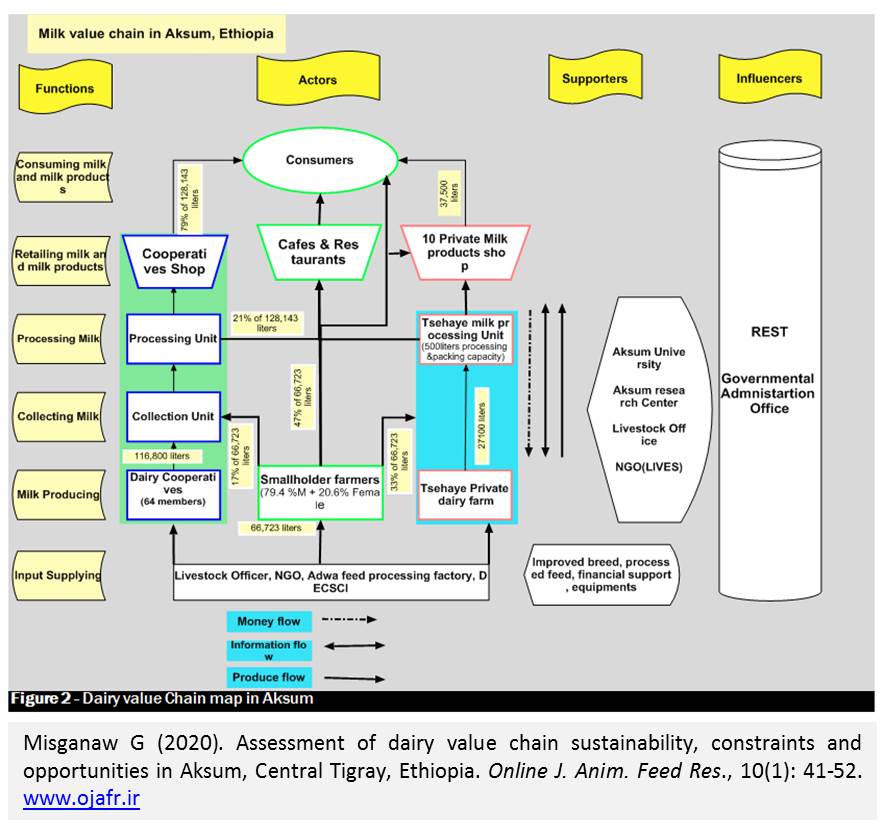Previous issue | Next issue | Archive
Volume 10 (1); January 25, 2020 [Booklet] [EndNote XML for Agris]![]()
Review
Review on coronavirus, a middle east respiratory syndrome (MERS-CoV)
Kassahun B, Berhanu T and Damtew B.
Online J. Anim. Feed Res., 10(1): 01-11, 2020; pii: S222877012000001-10
DOI: https://dx.doi.org/10.36380/scil.2020.ojafr1
Abstract: Human coronaviruses (HCoVs) have long been considered in consequential pathogens, causing the “common cold” in otherwise healthy people. However, in the 21st century, 2 highly pathogenic HCoVs—severe acute respiratory syndrome coronavirus (SARS-CoV) and Middle East respiratory syndrome coronavirus (MERS-CoV)—emerged from animal reservoirs to cause global epidemics with alarming morbidity and mortality. In December 2019, yet another pathogenic HCoV, 2019 novel coronavirus (2019-nCoV), was recognized in Wuhan, China, and has caused serious illness and death. The ultimate cope and effect of this outbreak is unclear at present as the situation is rapidly evolving. Middle East respiratory syndrome coronavirus (MERS-CoV) is zoonotic diseases causing severe respiratory illness emerged in 2012 in Saudi Arabia. Phylogenetic studies and viral sequencing results strongly suggest that MERS-CoV originated from bat ancestors after evolutionary recombination process, primarily in dromedary camels in Africa. The prevalence of MERS-CoV antibodies, the identification of MERS-CoV RNA and viable virus from dromedary camels of Eastern Africa and the Arabian Peninsula are the suggestive evidence for inter-transmission of the virus, primarily from camels to humans and its public health risks. However, the infection in camel is mostly asymptomatic. In contrast to the camel case, the clinical signs and symptoms of MERS-CoV infection in humans ranges from an asymptomatic or mild respiratory illness to severe pneumonia and multi-organ failure with an overall mortality rate of about 35%. Though inter-human spread within health care settings is responsible for the majority of reported MERS-CoV human cases, the virus is currently incapable of causing sustained human-to-human transmission (pandemic occurrence). Currently, there is no specific drug or vaccine available for treatment and prevention of MERS-CoV. The important measures to control MERS-CoV spread are strict regulation of camel movement, regular herd screening and isolation of infected camels, use of personal protective equipment by camel handlers and awareness creation on the public where consumption of unpasteurized camel milk is common. Therefore, urgent global epidemiological studies are required, to understand the transmission patterns and the human cases of MERS-CoV and also for the proper implementation of the above-mentioned control measures.
Keywords: Bats, Dipeptidyl peptidase 4, Dromedary camels, MERS-CoV, SARS-CoV, Transmission
Morpho-histological study of spleen ontogenesis in lambs during antenatal and posnatal period.
Eddine Djallal R, Amine Mohamed F, Manel H, Khaoula M and Marina L.
Online J. Anim. Feed Res., 10(1): 12-16, 2020; pii: S222877012000002-10
DOI: https://dx.doi.org/10.36380/scil.2020.ojafr2
Abstract: In an experiment on the spleen of healthy lambs at two periods (prenatal and postnatal), using anatomo-topographic and histo-cytological research methods and with subsequent statistical analysis, it was found that the changes in the anatomical and histological structure related to the age of this organ, including during the early stages of the postnatal period of ontogenesis. Note that the surface of the spleen is covered with a capsule of connective tissue, from which leave trabeculae which divide the parenchyma of the organ into lobes. At the time of physiological maturity, the ratio of the structures changes in the direction of an increase in the white pulp and a decrease in the component of the red pulp. During all periods of prenatal fetal development, the percentages of spleen tissue components corresponding to fetal analogs with normal clinical development are determined. The morphological structure of the spleen is described for the first time for this breed in Algeria, age-related changes in the structures of the parenchyma are traced, the formation of follicles began during the terminal phase of gestation, and the development age-related white pulp.
Keywords: Algeria, Follicle, Parenchyma, Postnatal, Spleen, Lambs, White pulp.
Research Paper
Conservation-based breeding program for indigenous sheep breeds in Ethiopia: the way forward.
Molla M.
Online J. Anim. Feed Res., 10(1): 17-24, 2020; pii: S222877012000003-10
DOI: https://dx.doi.org/10.36380/scil.2020.ojafr3
Abstract: This paper review briefly Ethiopian sheep genetic resources, description of farming systems, breeding objectives of the community, and to quantify threats with previous sheep genetic improvement and conservation strategies in Ethiopia. Thus, the aims of this paper focus on the role of characterizing indigenous sheep breed, including their threat status in genetic improvement programs. Indigenous sheep genetic resources have contributed considerable portion to the integrated crop-livestock farming systems in Ethiopia. Ethiopia endowed with a diverse sheep genetic resource maintained under different production systems. Sheep research and development in Ethiopia has largely focused on characterization of sheep genetic resources, description of farming systems and genetic improvements using crossbreeding and selection within breed. In Ethiopia, there are a total of 14 traditional sheep populations in Ethiopia fall into six breed groups based on DNA and morphological data. The main cause of threatening the sheep genetic resource in Ethiopia is indiscriminate crossbreeding with exotic germplasm. Few research institutes and agricultural universities are involved in the conservation and management of sheep breeds in Ethiopia. Currently the emphasis is on village based rather than centre-based genetic improvement program. It is possible to conserve sheep genetic resources in Ethiopia through quantifying past sheep characterization works and developing breeding programs suitable to the conditions of smallholder farmers that increase the economic values of indigenous sheep breeds.
Keywords: Conservation, Indigenous, Sheep, Smallholder farmer, Village breeding practice
Research Paper
Phenotypic characterization of donkeys in Benishangul Gumuz National Regional State.
Mustefa A, Assefa A, Misganaw M, Getachew F, Abegaz S, Hailu A and Emshaw Y.
Online J. Anim. Feed Res., 10(1): 25-35, 2020; pii: S222877012000004-10
DOI: https://dx.doi.org/10.36380/scil.2020.ojafr4
Abstract: Fifteen morphometric measurements and eighteen qualitative traits were recorded on 323 randomly sampled adult donkeys (123 jacks and 200 jennets) to meet an objective of characterizing a heterogeneous donkey population of three phenotypic types (Sinnar, the locals and their crosses) found in Benishangul Gumuz region of Ethiopia. The General Linear Model and non-parametric test (chi-square) procedures of SAS software were used for the analysis of the morphometric data and qualitative traits, respectively. Means were separated using the Tukey-Kramer test. The studied morphometric measurements were significantly affected by the phenotypic type and partially affected by sex and sample location /district. Sinnar donkeys were significantly bigger and heavier than the local and the crosses. However, for some of the morphometric measurements no significance difference was observed between Sinnar and crosses implying the presence of heterosis. Heart girth measurements for Sinnar, local and crosses were 110.61±0.436, 106.18±0.448 and 108.87±1.251, respectively. Body weight estimates of 127.26±1.277, 113.40±1.312 and 121.13± 3.665 kg were obtained for Sinnar, the local and the crosses. There was sexual size dimorphism and depending on the type of morphometric trait either jacks or jennets show significantly (P < 0.05) higher values as compared to the opposite sex. Jacks had wider chest (22.61 vs 22.09 cm.), thicker (24.40 vs 23.24 cm.), and longer cannon bone (31.00 vs 31.32 cm) than jennets, while the jennets possess wider hip (33.00 vs 31.69 cm.) and longer body (90.49 vs 88.52 cm.), back (67.37 vs 66.17), ear (24.42 vs 23.90 cm) and heavier estimated weight (122.47 vs 118.71 kg) than the jacks. Limited location effect was recorded showing donkeys from Guba district were comparatively the largest. Majority of the studied donkeys possess white abdominal color, unpigmented hoof and muzzle, short and medium hair size, plain body color pattern with long dorsal stripe without leg stripe, straight face and sloppy rump profile, medium tail length and thickness at the base of the tail. Qualitative differences (P < 0.05) were also observed among the class categories. Further molecular level studies could supplement the current study and provide more refined classification of the various genotypes in the studied area. Similarly, characterization of the local donkeys found in other parts of the region and the Abyssinian donkeys in the adjoining areas is required.
Keywords: Heart girth, Morphometric, Qualitative, Phenotypic types, Sinnar
Research Paper
Effect of phase feeding on broiler performance.
Algam TA, Osman RH, Zomrawi WB and Abdalhag MA.
Online J. Anim. Feed Res., 10(1): 36-40, 2020; pii: S222877012000005-10
DOI: https://dx.doi.org/10.36380/scil.2020.ojafr5
Abstract: This study was conducted to assess the effects of phase feeding on growth performance of broiler chicks. The experimental work consisted of a 7-week trial feeding, in which three different feeding programme. Three experimental diets formulated to contain different levels of metabolizable energy (ME) and crude protein (CP); namely a broiler starter diet containing approximately 3072 Kcal ME/kg and 23.9% crude protein, a grower diet containing 3118 Kcal ME/Kg and 21.8% crude protein, and a finisher diet containing 3200 Kcal ME/kg and 18% crude protein. The results diets not reveal any significant differences in productive parameters, but indicated marked trends in differences among the experimental treatment. These differences showed that the highest feed consumption and live weight gain were attained by the group of birds fed the starter diet throughout the experimental period. The starter diet followed by the finisher diet for four weeks resulted in the lowest total feed consumption, reasonably high body weight gain, lowest feed conversion ratio and highest dressing percentage. It can, however, be considered under the conditions of the present experiment that the three experimental feeding programmes supported similar productive performance of broiler, indicating a slight economic advantage of feeding the starter diet followed by the finisher diet.
Keywords: Broiler chicken, Growth performance, Phase feeding
Research Paper
Assessment of dairy value chain sustainability, constraints and opportunities in Aksum, Central Tigray, Ethiopia.
Misganaw G.
Online J. Anim. Feed Res., 10(1): 41-52, 2020; pii: S222877012000006-10
DOI: https://dx.doi.org/10.36380/scil.2020.ojafr6
Abstract: Describing the sustainability of dairy value chain and showing the clear gaps of the sector is important for bringing continual improvement that can support the livelihoods of dairy farmers and the wellbeing of environment. To facilitate a balanced practice on the three pillars of sustainability (people, planet and profit), a regular updating of the existing situation of dairy production is crucial. Therefore, the objective of this report was describing the sustainability of dairy value chain in Aksum district, and shows clearly the gaps of the sector that needs urgent action for continual improvement. Desk study for gathering secondary information was employed. Different analytical tools were used to analyze and present the result. In Aksum, milk is produced by mainly smallholder farmers, dairy cooperatives and few commercial medium scale farms. The production system is operated by gender inclusive system which is in line with sustainable dairy. The production potential of milking cows is very poor that is mainly due to poor genetic makeup and management system. The common feed is roughage that causes to the low production performance (poor economic viability) and high greenhouse gas emissions from enteric fermentation (risky for environment). The highest value addition, risks and costs are belonged to producers but the high share of margin is for processors and retailers. Therefore, this unfair share of profits, costs and risks is not a good sign of sustainable dairy development. Hence, an attempt to improve the dairy sector should consider the three pillars of sustainability.
Keywords: Dairy value chain, gender inclusive, smallholder farmers, Sustainability
Previous issue | Next issue | Archive![]()
| < Prev | Next > |
|---|

